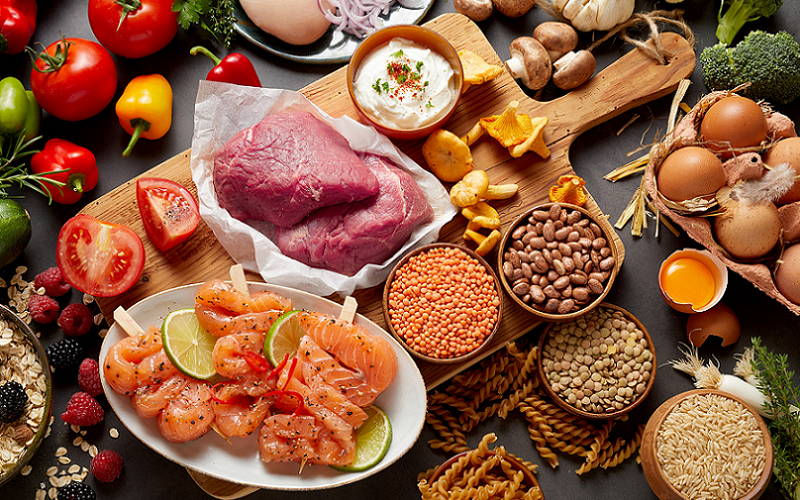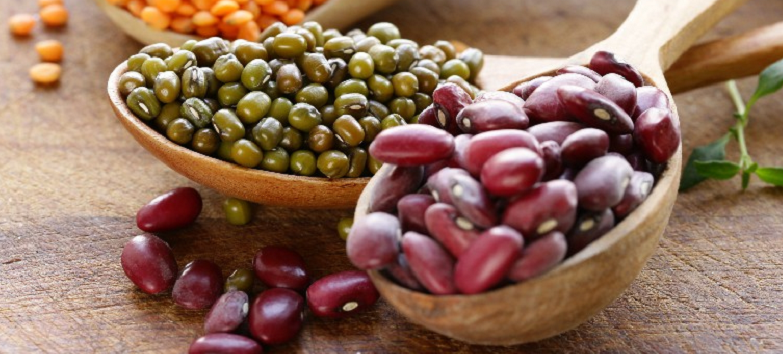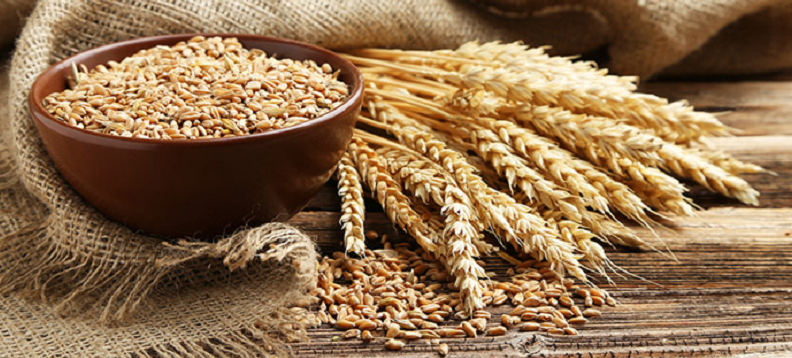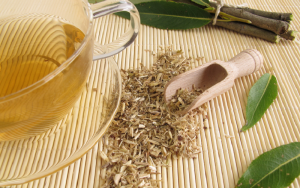
Lectins, proteins found in a wide array of our everyday foods, have been the topic of much debate among health and nutrition experts. The question is: are lectins truly harmful to our health?
If you’ve been exploring health and nutrition topics recently, you’ve likely come across this somewhat controversial subject – lectins. These proteins, found in a wide array of our everyday foods, have been the topic of much debate among health and nutrition experts. Some claim that lectins are harmful, causing a range of health issues from digestive distress to chronic inflammation. Others, however, argue that lectins are essential components of our diet, playing vital roles in our overall health, from cell communication to immune response. The question then becomes: are lectins truly harmful to our health?
Contents
Understanding Lectins: An In-Depth Look
Before we delve into the potential health implications of consuming lectins, it’s essential to understand what these proteins are, their biological role, the different types, and how prevalent they are in our diets.
The Biological Role of Lectins
Lectins are more than just simple proteins. They serve specific biological roles both in the plants that produce them and in the bodies of the animals and humans that consume them. Plants use lectins as a defense mechanism against insects, fungi, and microbial infections. In human bodies, lectins interact with our cells, particularly those lining our gut, due to their unique ability to bind to specific carbohydrate molecules. This interaction can influence various physiological responses, including immune response and cell-to-cell communication [1].
The Different Types of Lectins
While the term “lectin” might make it sound like there’s only one type, there are, in fact, many different types of lectins. These types differ based on their specific carbohydrate-binding properties and their biological effects. Some of the most commonly known include Phytohemagglutinin (found in red kidney beans), Wheat Germ Agglutinin (found in wheat), and Peanut Agglutinin (found in peanuts). Each of these has unique properties and potential effects on human health.
The Presence of Lectins in Our Daily Diet
Lectins are ubiquitous in our food supply. They are found in high concentrations in legumes, whole grains, nightshade vegetables like tomatoes and potatoes, and some fruits and dairy products. However, it’s important to note that the lectin content in these foods can vary significantly based on the specific type of food, its maturity, and how it’s prepared and cooked. For example, cooking, sprouting, fermenting, or peeling can significantly reduce the amount of lectins in food, rendering most safe for consumption.

The Potential Health Risks of Lectins
With a basic understanding of what lectins are and where they come from, let’s now turn our attention to the potential health risks associated with them. This is where the controversy truly begins, with some experts asserting that lectins can have a negative impact on human health.
The Controversy: Are Lectins Harmful?
The question of whether lectins are harmful to human health is a contentious one. On one side, some health experts argue that lectins can damage the gut lining, interfere with nutrient absorption, and trigger inflammatory responses. On the other side, many in the scientific community caution that these claims are largely based on studies conducted in vitro (outside a living organism) or on animals, and may not translate directly to humans.
Detailed Overview of Potential Negative Effects
Despite the ongoing debate, it’s important to understand the potential negative effects associated with lectins that some researchers have pointed out.
Impact on the Gut and Digestive System
Lectins are resistant to cooking and digestive enzymes, which means they can pass through the stomach unchanged. Once in the gut, some research suggests that certain types of lectins can interact with the gut lining, potentially damaging it and causing discomfort, bloating, or other symptoms of food intolerance [2].
Effects on Nutrient Absorption
There’s also some evidence that lectins can interfere with the absorption of nutrients in the gut. They do this by binding to the lining of the small intestine, potentially causing a decrease in nutrient uptake.
Possible Link to Inflammatory Conditions
Finally, some research suggests a link between lectin consumption and inflammatory conditions, like rheumatoid arthritis and type 1 diabetes. The theory is that lectins may contribute to “leaky gut” – a condition where the gut lining becomes permeable, allowing bacteria and toxins to enter the bloodstream, which could trigger an immune response [3].
Research and Studies Supporting These Claims
While these potential negative effects may sound alarming, it’s crucial to note that much of the evidence supporting these claims comes from in vitro or animal studies. Additionally, the concentration of lectins used in these studies often far exceeds what a person would typically consume in a regular diet. Therefore, while these risks should not be dismissed outright, they should also be understood in the context of current scientific understanding and the limitations of the existing research.

The Other Side of the Coin: Health Benefits of Lectins
While some people are concerned about the potential negative effects of lectins, it’s essential to remember that these proteins are not inherently bad. In fact, they can also have several health benefits. These positive aspects are often overlooked in the debate over whether lectins are harmful or not.
The Role of Lectins in Cell Communication and Immune Response
Lectins are often described as “cellular communicators.” They have the unique ability to bind to specific carbohydrate molecules on the surface of cells, which can influence various physiological responses. For example, some lectins play a crucial role in immune response, helping the body recognize and respond to foreign substances.
Lectins and Their Potential Anti-Cancer Properties
Certain types of lectins, such as those found in legumes and whole grains, have been studied for their potential anti-cancer properties. These lectins can bind to specific cells, including cancer cells, and trigger apoptosis – a process where cells self-destruct. However, much of this research is still in the early stages, and further studies are needed to confirm these effects in humans [4].
The Impact of Lectins on Weight Management
Interestingly, some research suggests that lectins could potentially aid in weight management. Certain types of lectins can slow the rate of food passage through the gut, which can increase feelings of fullness and help control appetite. However, like the potential anti-cancer properties of lectins, this area of research is still developing, and more studies are needed to fully understand these effects.
Research and Studies Supporting These Claims
As with the potential risks, the benefits of lectins are supported by a body of scientific research. However, it’s important to note that many of these studies are either animal studies or conducted in vitro. While these findings provide valuable insights into the potential benefits of lectins, they do not definitively prove that these benefits will occur in humans. As always, more research is needed to fully understand the complex role of lectins in human health [5].

Lectin Dietary Considerations and Recommendations
Now that we’ve explored both the potential risks and benefits of lectins, you might be wondering what this means for your diet. Should you avoid foods with lectins altogether, or are there ways to reduce their potential negative impacts? Let’s delve into some dietary considerations and recommendations regarding lectins.
Foods High in Lectins to Limit or Avoid
If you’re concerned about the potential negative effects of lectins, you might consider limiting or avoiding certain foods that are particularly high in these proteins. These include legumes like beans and lentils, whole grains, nightshade vegetables, dairy products, and some fruits. However, it’s important to balance this consideration with the fact that many of these foods are also rich in essential nutrients.
Tips for Reducing Lectin Levels in Foods
Fortunately, there are several ways to reduce the lectin content in foods. Cooking is the most effective method – for example, boiling legumes can significantly decrease their lectin content. Sprouting, peeling, and fermenting foods can also reduce lectin levels. Using these preparation methods can help you enjoy the benefits of nutrient-rich foods while minimizing your intake of lectins.
Alternatives to High-Lectin Foods
If you choose to limit your intake of high-lectin foods, there are plenty of nutritious alternatives available. For example, you can substitute whole grains with pseudocereals like quinoa or buckwheat, which are naturally lower in lectins. Similarly, sweet potatoes can be a good alternative to regular potatoes.
Considerations for Individuals with Certain Health Conditions
Individuals with certain health conditions, such as autoimmune disorders or digestive issues, may benefit from a diet lower in lectins. If you fall into this category, it’s particularly important to consult with a healthcare provider or nutritionist before making significant changes to your diet. They can provide personalized advice based on your specific health needs and conditions.
References
[1] What are dietary lectins and should you avoid eating them?
[2] Lectins
[3] Do dietary lectins cause disease?
[4] Does the lectin-free diet work?
[5] Health Harms of Lectins: Hype or Paradox?







